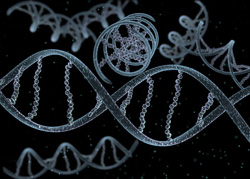Unravelling the mechanisms of mutagenesis
Mutations are alterations in the sequence of the DNA that occur in the form of base additions, deletions or substitutions. Although mutations are the source of genetic variation and evolution in natural populations, they can cause human genetic diseases. The plethora of sequencing data available from various studies on normal as well as cancerous samples urged scientists of the EU-funded 'Human variation: Causes, patterns and consequences' (HUMVAR) project to investigate the mutagenesis process. To this end, they performed bioinformatics analysis of hundreds of resequenced human genomes. This method facilitated the studying of mutations in their native genomic environment and on a whole-genome scale. A key objective was to understand why mutation rates fluctuate among different genetic loci and to evaluate if this is a chromosome region-specific phenomenon. For this purpose, the genome was categorised into segments, each characterised by a specific mutation profile. These segments were then examined for the presence of certain genomic landscape features and the contributions of different biochemical processes to mutagenesis evaluated. Results showed that mutations that accumulated in neutrally evolving regions of the human genome over millions of years shared similar profiles with recently segregated mutations. Additionally, mutation rates were found to dictate the genomic localisation of genes and non-coding functional marks. Comparative bioinformatics analysis with other mammalian genomes enabled scientists to observe the evolutionary history of primate chromosomes. The HUMVAR research project also developed tools for genomic research and statistical analysis that could be used in future studies. By deciphering the association between elevated mutation rates and the presence of particular genomic features, the outcome of the work advanced our understanding of the overall process of mutagenesis.

